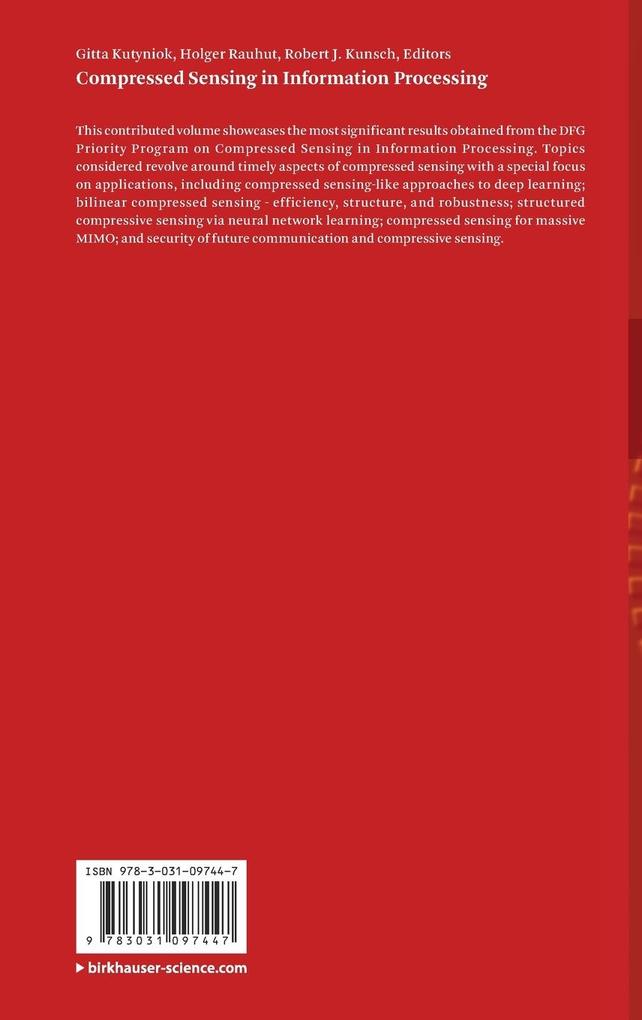
Zustellung: Mo, 23.06. - Do, 26.06.
Versand in 1-2 Wochen
VersandkostenfreiBestellen & in Filiale abholen:
This contributed volume showcases the most significant results obtained from the DFG Priority Program on Compressed Sensing in Information Processing. Topics considered revolve around timely aspects of compressed sensing with a special focus on applications, including compressed sensing-like approaches to deep learning; bilinear compressed sensing - efficiency, structure, and robustness; structured compressive sensing via neural network learning; compressed sensing for massive MIMO; and security of future communication and compressive sensing.
Inhaltsverzeichnis
Hierarchical compressed sensing (G. Wunder). - Proof Methods for Robust Low-Rank Matrix Recovery (T. Fuchs). - New Challenges in Covariance Estimation: Multiple Structures and Coarse Quantization (J. Maly). - Sparse Deterministic and Stochastic Channels: Identification of Spreading Functions and Covariances (Dae Gwan Lee). - Analysis of Sparse Recovery Algorithms via the Replica Method (A. Bereyhi). - Unbiasing in Iterative Reconstruction Algorithms for Discrete Compressed Sensing (F. H. Fischer). - Recovery under Side Constraints (M. Pesavento). - Compressive Sensing and Neural Networks from a Statistical Learning Perspective (E. Schnoor). - Angular Scattering Function Estimation Using Deep Neural Networks (Y. Song). - Fast Radio Propagation Prediction with Deep Learning (R. Levie). - Active Channel Sparsification: Realizing Frequency Division Duplexing Massive MIMO with Minimal Overhead (M. B. Khalilsarai). - Atmospheric Radar Imaging Improvements Using Compressed Sensing and MIMO (J. O. Aweda). - Over-the-Air Computation for Distributed Machine Learning and Consensus in Large Wireless Networks (M. Frey). - Information Theory and Recovery Algorithms for Data Fusion in Earth Observation (M. Fornasier). - Sparse Recovery of Sound Fields Using Measurements from Moving Microphones (A. Mertins). - Compressed Sensing in the Spherical Near-Field to Far-Field Transformation (C. Culotta-López).
Produktdetails
Erscheinungsdatum
22. Oktober 2022
Sprache
englisch
Auflage
1st edition 2022
Seitenanzahl
560
Reihe
Applied and Numerical Harmonic Analysis
Herausgegeben von
Gitta Kutyniok, Holger Rauhut, Robert J. Kunsch
Verlag/Hersteller
Produktart
gebunden
Abbildungen
XVII, 542 p. 116 illus., 90 illus. in color.
Gewicht
998 g
Größe (L/B/H)
241/160/36 mm
ISBN
9783031097447
Entdecken Sie mehr
Bewertungen
0 Bewertungen
Es wurden noch keine Bewertungen abgegeben. Schreiben Sie die erste Bewertung zu "Compressed Sensing in Information Processing" und helfen Sie damit anderen bei der Kaufentscheidung.










